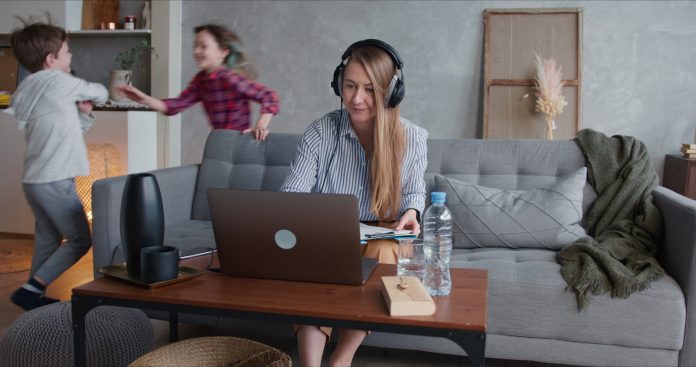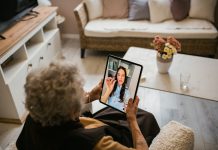Cecilia Van Cauwenberghe from Frost & Sullivan’s TechCasting Group, describes the impact of teleworking in health, wellness & well-being, beginning with the implications of this in pandemic & post-pandemic scenarios
Teleworking prevalence has increased due to COVID-19. Although returning to standard, pre-pandemic routings, a hybrid working environment arises two years later. Defined as a form of work at home using information and communication technologies, teleworking has been the matter of several studies during the past two years.
This fact supposes some pros and some cons. According to most researchers who have focused on evaluating the impact of teleworking on health, working under confinement has brought challenges. Just to name a few, restricted face- to-face interaction with colleagues and supervisors, limited access to ergonomic resources, amplified social isolation, and distorted role definitions could have adversely affected teleworker safety, health and well- being, overall (Shall and Chen, 2021).
“According to most researchers who have focused on evaluating the impact of teleworking on health, working under confinement has brought challenges.”
In terms of physical considerations, teleworking has been associated with prolonged periods in front of a computer, always at home, hence incrementing sedentary lifestyle, holding static and constraining postures, doing repetitive movements and subjecting forearms and wrists to extreme positions (Almarcha et al., 2021). However, workplace disturbances are beyond the effects of virtual or teleworking.
Collateral aspects, including the potential lack of infrastructure and systems to support specific tasks and surrounding stressors (childcare, home-school responsibilities, lay- offs, business closings) have dramatically perpetuated concerns for the job positions and financial security for workers (Escudero-Castillo et al., 2021). Consequently, work-life balance has been severely affected (Shipman et al., 2021). Today, some manifestations of that stress are evidenced, especially in health conditions.
Interventions for safety, health & well-being among teleworkers
Evidence-based strategies for improving occupational safety, health, and well-being among teleworkers are crucial in addressing these concerns.
Most interventions aim to increase worker motivation to engage in safe and healthy behaviours, from mental health habits and exercises to more organisational measures, such as safety leadership, role boundaries definitions and interpersonal interaction stimulation. Affordance-responsiveness plays a crucial role in day by day work. This approach must include options for social interaction.
Some solutions such as ergonomic home-office configurations have emerged in compensation for the deleterious effects of sedentary habits related to teleworking. Overall, these solutions intend to contribute to weight control or loss through additional energy expenditure, joint relief, and acute or chronic musculoskeletal pain (Buomprisco et al., 2021). Beyond common signs, changes in habits during teleworking also enhance cardiometabolic health and metabolic functions.
The World Health Organization (WHO), for instance, has recommended a physically active lifestyle, suggesting that adults participate in at least 150 to 300 min of moderate-intensity or at least 75 to 150 min of vigorous-intensity for additional health benefits.
According to the WHO, this amount of aerobic physical activity per week, together with strength and elasticity exercises, would help to reduce the risk of ulterior diseases, such as health failure, diabetes, or even cancer (Almarcha et al., 2021). Regular interruptions of 3-min of light–intensity activities for 20 min of sedentary time have been suggested. Naturally, such a non-personalised, one-size-fits-all approach has been severely questioned. Well-ness should not be limited to aerobic and strength exercises, while the response exercise-benefit should not be precisely linear.
Advanced information & communication technologies
The past two years have seen the onset of many mobile apps with all kinds of options to practice safe home exercises. Because of their non-dependency on specific gym equipment and virtual free interaction with the users, these apps promote training and socialisation through virtual communities. Moreover, data tracking using wearable technology has become popular, facilitating health metrics feedback that can be transferred to healthcare professionals for physical activity improvement (López Peláez et al., 2021).
Beyond monitoring, the use of artificial intelligence (AI) to personalise exercise prescriptions based on both psychological and biological factors via computerised exercise expert systems (CEES) and performance evaluation of a recommending interface (PERI) systems have acted as complementary tools to influence exercise behaviour and movement habits.
Finally, virtual reality (VR) has facilitated user interaction with immersed environments, providing total exploration and movement variability.
More on teleworking: The WHO perspective
During the pandemic, those who were able to work from home got used to teleworking. Working from home created new public health debates.
A recent WHO report published in collaboration with the International Labour Organization looks at the impact of teleworking on public health. The research suggests that improved work-life balance, opportunities for flexible working hours and decrease in air pollution are a handful of positive changes associated with the rise in working from home. It can also improve work productivity.
But if there aren’t proper processes in place, teleworking can lead to isolation, burnout, home violence, and musculoskeletal injuries.
Acknowledgements
I want to thank all contributors from the industry involved with developing and delivering this article from Frost & Sullivan.
Further reading
- Almarcha, M., Balagué, N. and Torrents, C., 2021. Healthy Teleworking: Towards Personalized Exercise Recommendations. Sustainability, 13(6), p.3192.
- Buomprisco, G., Ricci, S., Perri, R. and De Sio, S., 2021. Health and telework: new challenges after COVID-19 pandemic. European Journal of Environment and Public Health, 5(2), p.em0073.
- Escudero-Castillo, I., Mato-Díaz, F. and Rodriguez-Alvarez, A., 2021. Furloughs, teleworking and other work situations during the COVID-19 lockdown: impact on mental well-being. International Journal of Environmental Research and Public Health, 18(6), p.2898.
- López Peláez, A., Erro-Garcés, A., Pinilla García, F.J. and Kiriakou, D., 2021. Working in the 21st Century. The Coronavirus Crisis: A Driver of Digitalisation, Teleworking, and Innovation, with Unintended Social Consequences. Information, 12(9), p.377.
- Schall Jr, M.C. and Chen, P., 2021. Evidence-based strategies for improving occupational safety and health among teleworkers during and after the coronavirus pandemic. Human factors, p.0018720820984583.
- Shipman, K., Burrell, D.N. and Mac Pherson, A.H., 2021. An organizational analysis of how managers must understand the mental health impact of teleworking during COVID-19 on employees. International Journal of Organizational Analysis.











